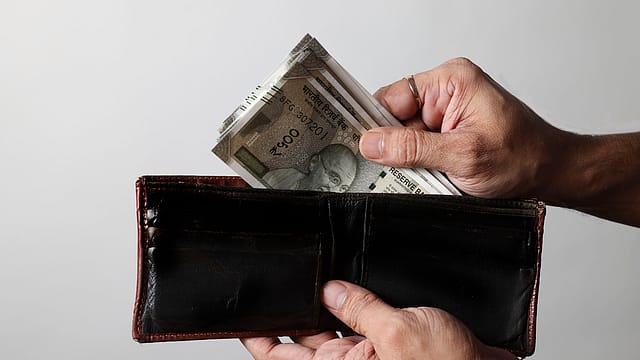Currency in circulation falls during Diwali for first time in 2 decades: SBI
ADVERTISEMENT

Currency in circulation declined during the Diwali week for the first time in two decades as cheap data and smartphones disrupted India's payment system, according to SBI Research.
Over the years, India's cash-led economy now has changed to a smartphone-led payment economy, Soumya Kanti Ghosh, chief economic adviser at State Bank of India, says in a note.
A lower currency in circulation also is akin to a CRR (cash reserve ratio) cut for the banking system, as it results in less leakage of deposits and it will impact monetary transmission positively, Ghosh adds.
This comes at a time when transaction value through the unified payments interface (UPI) touched a record high of ₹12.11 lakh in October, clocking an 8.52% month-on-month growth, according to data released by the National Payments Corporation in India. In terms of volume, UPI transactions were at an all-time high of 731 crore.
With the increased acceptance of digital payments in the country, the over reliance on cash is slowly fading away.
The success of the digital journey is primarily due to the relentless push by the government to formalise and digitalise the economy. Further, interoperable payment systems like UPI, Wallets and PPIs (prepaid payment instruments) have made it simple and cheaper to transfer money digitally, even for those who don’t have bank accounts, the report says.
December 2025
The annual Fortune 500 India list, the definitive compendium of corporate performance, is out. This year, the cumulative revenue of the Fortune 500 India companies has breached $2 trillion for the first time. Plus, find out which are the Best B-schools in India.
Over the years, the payment system has expanded rapidly with new innovations like QR code, NFC etc. and has also seen the swift entry of Big Tech firms in this industry.
"If we look at the latest retail digital transactions data, NEFT holds a share of 55% in value terms and most of the transactions are done through either at branch or through internet banking. However, if we look only transactions done through smartphones like UPI, IMPS & e-wallet, they have share of around 16%, 12% and 1% respectively," the report says.
The trends are revealing, as the share of cash transactions in payment systems has been declining from 88% in FY16 to 20% in FY22 and is estimated to go down further to 11.15% in FY27, says Ghosh.
Consequently, the share of digital transactions is continuously increasing from 11.26% in FY16 to 80.4% in FY22 and is expected to touch 88% in FY27.
Digital payments also went up due to the Covid-19 pandemic as people opted for contactless digital transactions to protect themselves from the virus.
Meanwhile, India has emerged as the front runner in the fintech landscape in Asia, with home to over 7,000 fintech start-ups and highest number of unicorns in the region, according to a report by Bain & Company. Indian fintechs witnessed record investment and deal activity, receiving approximately $10 billion in funding across more than 580 deals in FY21, which was three times the $3.5 billion received in 2020. The first half of 2022, has seen conservative funding of $4.2 billion, which is lower than H1 FY21, but twice the funding received in H1 FY20, the report says.
